Less than a decade ago graffiti in Malaysia was considered vandalism and artists could be arrested and fined. Today many of those same artists are famous and make a living from their artwork.
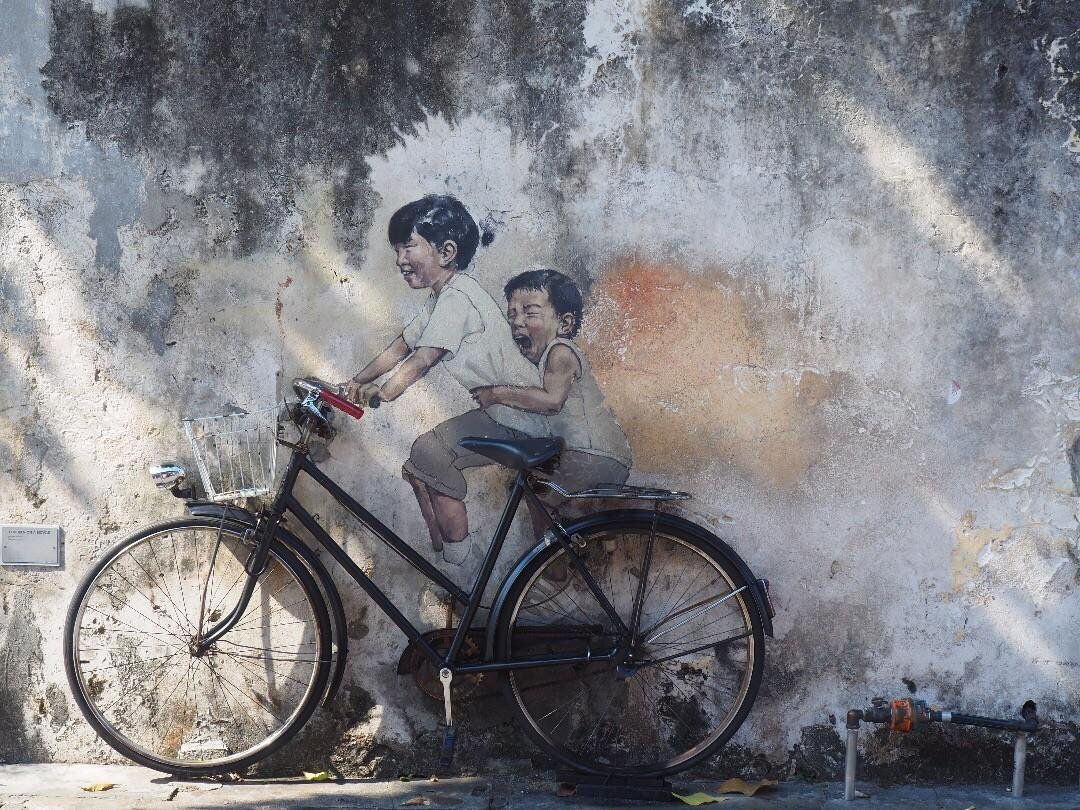
Children on a Bicycle by Ernest Zacharevic
Vandals to artists
Prior to 2010 the graffiti scene was construed as vandalism, rebellious, a threat to law and order. Then in December 2010 the Kuala Lumpur town hall introduced the KUL Sign Festival as a way to enable artists to showcase their work legally, and to bring life and colour to what was a drab, grey part of the city. It is now an annual event.
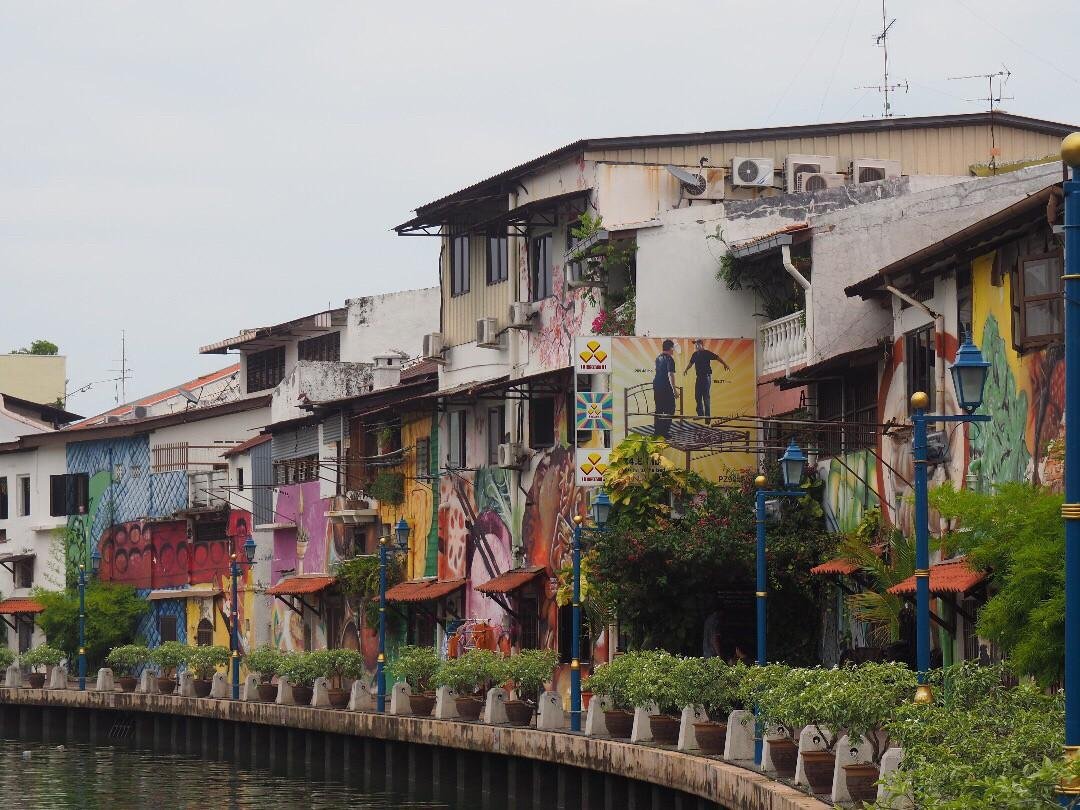
Street art by the river in Melaka
In 2012 Lithuanian artist Ernest Zacharevic was commissioned to paint his now famous series of murals in George Town, Penang. These have been a huge success and tourist attraction with queues waiting to have their photos taken with the artwork. The town has developed a sightseeing map that takes tourists on a trail of the most popular street art. Julia Volchkova, a Russian artist is another artist whose murals are extremely popular in the country.

Indian Boatman by Julia Volchkova
From being considered vandals and criminals, street artists in Malaysia can now make a living from commissions for their work. The scene, you could say, is thriving, attracting artists from all over the world.
Local artists have also benefitted, with some recognized names including Louis Gan and Khor Zew Wey, a street artist known as Bibichun, and WK Setor. However there have been some complaints that the government is not promoting local artists to the same extent as the vastly more famous foreigners.
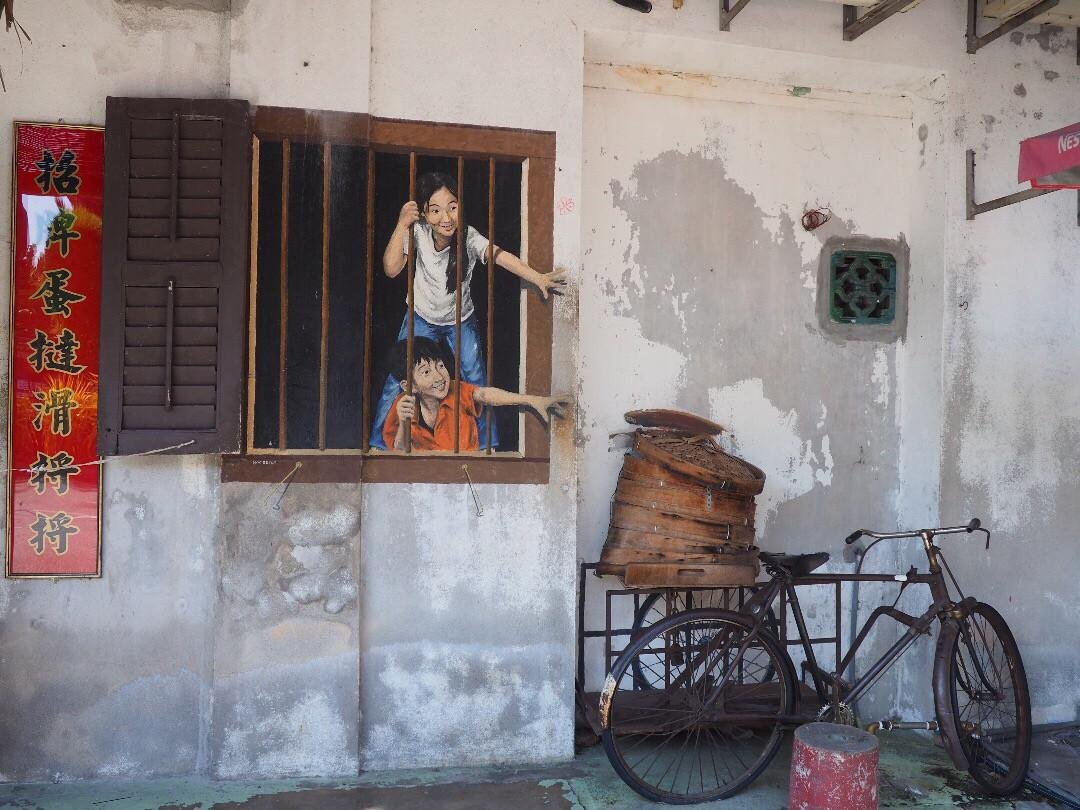
I Want Pau by WK Setor
At what price?
But should the government be getting involved in the street art scene at all? What price has been paid for the commercialization of this art form?
First of all, graffiti is still criminalized if the artist does not get permission from the authorities, carrying a fine of around $500.
Secondly, while the authorities have promised to take an open-minded attitude to reviewing requests for permits, there has been a limiting effect on what artists can portray in their murals.
What’s permitted?
Even Zacharevic has fallen foul of the authorities. In 2012, at the invitation of the local council, he put up a mural in Johor Bahru, home of Malaysia’s Legoland. The mural depicted two Lego figures, one, a woman carrying a Chanel handbag, and the other, painted on the wall around the corner, a man carrying a knife, portrayed as lying in wait to mug the woman.
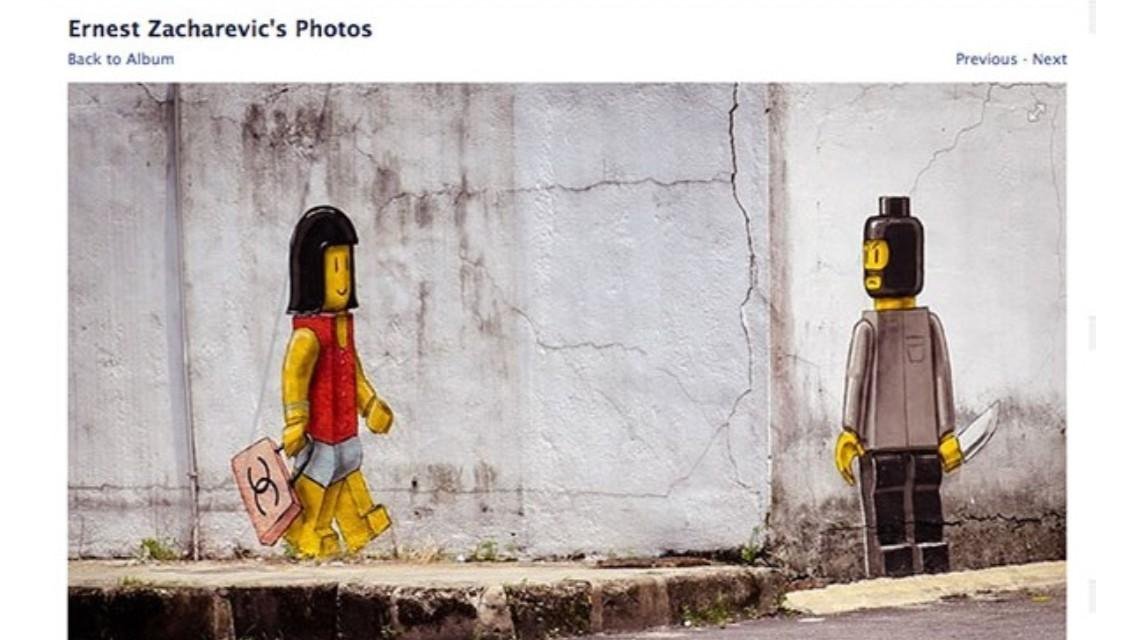
Mural by Ernest Zacharevic
(photo by Ernest Zacharevic)
The mural was intended as a commentary on Johor Bahru’s high crime rate. The government, however, did not consider that the art promoted the city ‘in the right way’ and had the mural whitewashed.
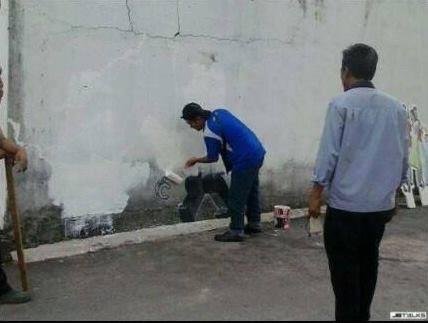
(photo by JB Talks)
Expanding on this, the corporate communications director for the council stated ‘the pictures that are to be drawn must be suitable for Malaysians... they can’t just draw anything they like. If it’s not suitable and school kids see it that’s not good either.’ As examples of the kinds of art that is acceptable he mentioned art that attracted tourists, on themes such as nature, green campaigns, cleanliness education campaigns and so on.
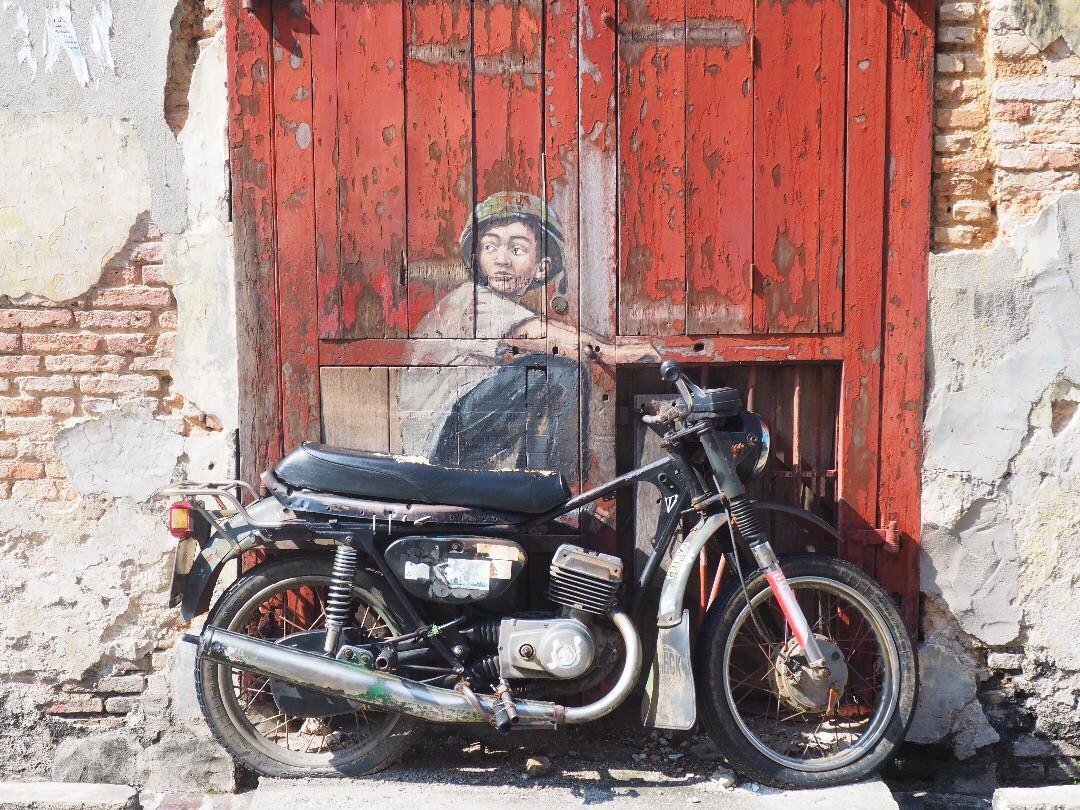
Boy on Motorcycle by Ernest Zacharevic
Speaking truth to power
That’s all very well, but isn’t much of the power of graffiti in its subversiveness, isn’t it supposed to be anti-establishment, socially conscious, pushing boundaries? Banksy’s art gets its power exactly from being done without permission from the powers that be, for being critical of authority, and socially and politically progressive. Graffiti has long been a way for disaffected youth to speak out, get their voices heard in a public forum, by using city walls as their canvas.
In this context one can’t help but think that the Malaysian authorities made a smart move in commercializing the street art scene - turning it into something that works in their favour, with permitted works that will attract tourists.
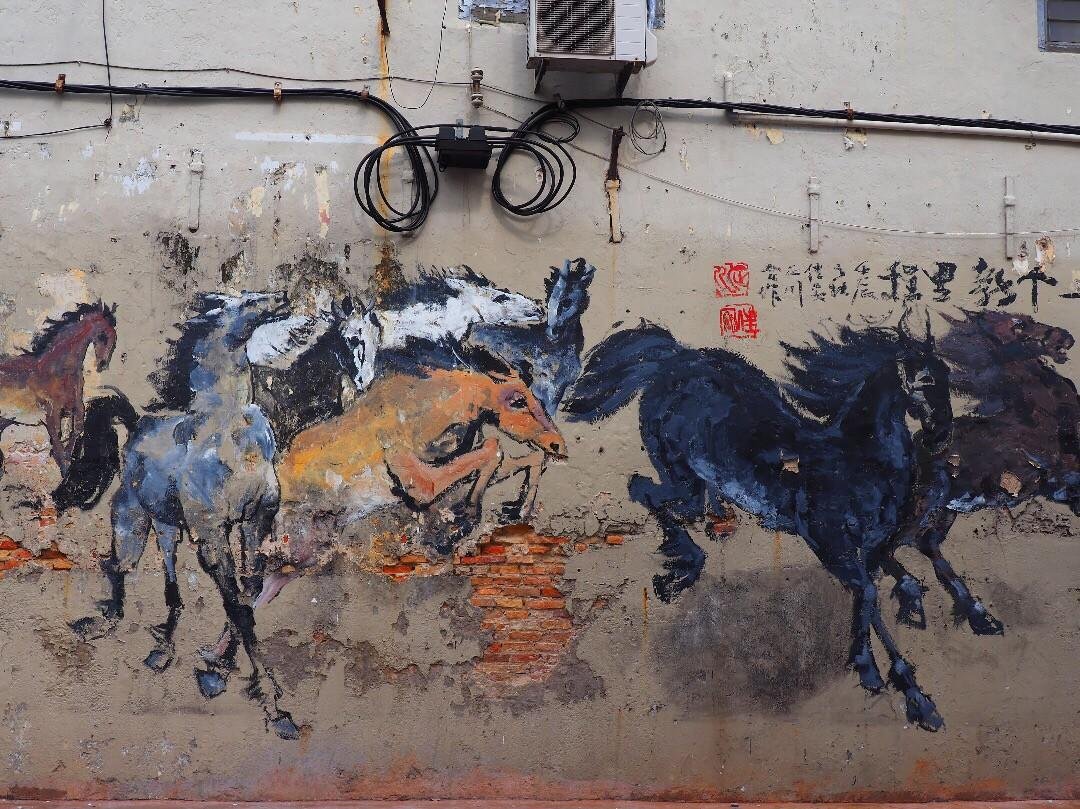
Eight running horses by Chong Chen Chuan and Quake Kah Ann
I don’t want to undermine the work of those street artists who are working to brighten up Malaysia’s cities - it’s great that they are getting recognition and reward for their talent and there’s no doubt that the street art in Malaysia is impressive and worth a visit. But spare a thought when you admire it for the artists whose work remains invisible.
All photos by freewheel unless otherwise credited
